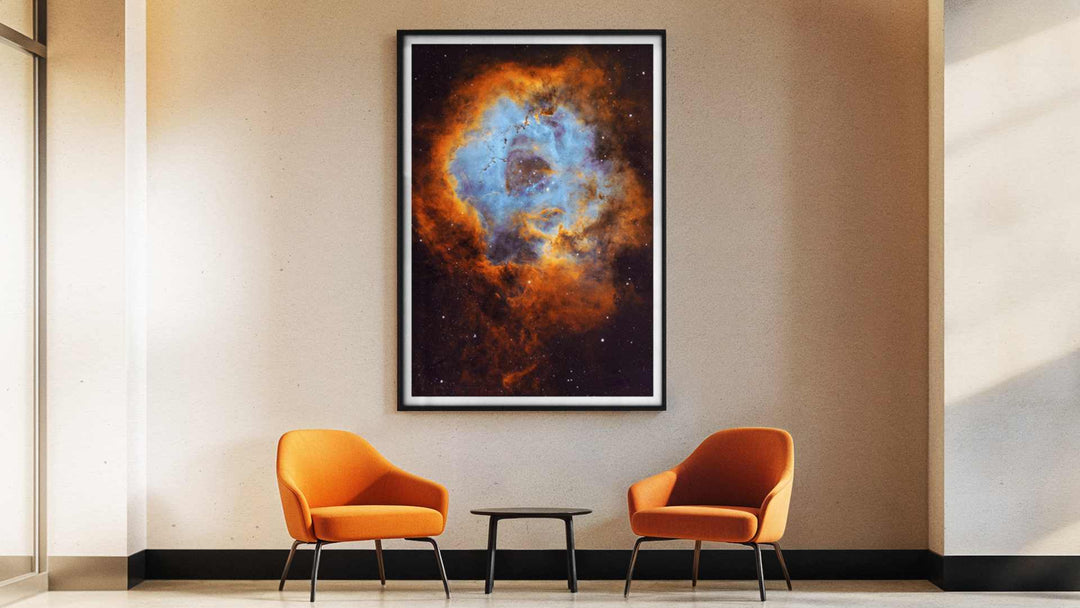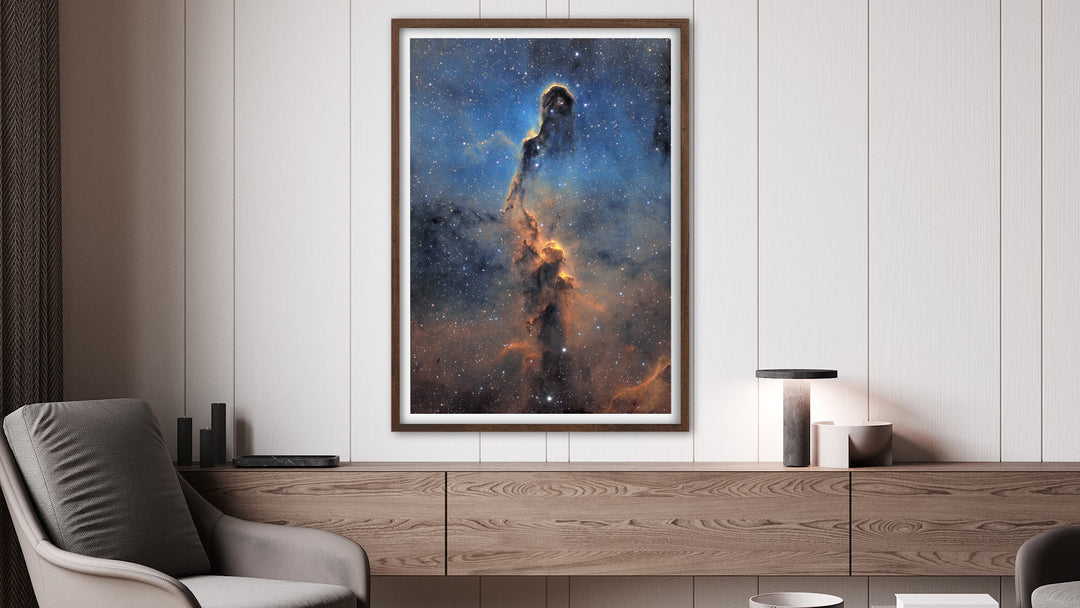Łukasz Remkowicz: The Solar Corona During Totality - A Moment Earned, A Masterpiece Captured
This is the ultimate prize in astronomy. This stunning image captures the ethereal, ghostly atmosphere of the Sun—the Solar Corona—visible for a few precious minutes during the total solar eclipse of April 8, 2024.
But for Polish astrophotographer Łukasz Remkowicz, this wasn't just another eclipse. This was the culmination of a year-long obsession—monitoring forums, testing gear, creating automation sequences, studying weather patterns across entire states.
And then, 24 hours before his flight, everything changed.
Texas—usually clear, usually perfect—was forecast to be cloudy. Almost the entire path of totality looked doomed. Online eclipse forums erupted with anxiety. Thousands of travelers scrambling for backup plans.
But Arkansas? Arkansas looked clear.
So Remkowicz made a decision: drive 1,200 kilometers. Arrive the night before. Set up near Russellville. Polar-align the mount in darkness. Then trust the automation and actually watch his first total solar eclipse with his own eyes while the camera did its work.
The result? TOP 5 in the Astrophotography Prize 2025. Featured as NASA's Astronomy Picture of the Day on Instagram (REELS APOD). AAPOD2 Image of the Day AND Image of the Month. Triple recognition for an image that captures what most people never see: the Sun's corona in its full, impossible glory.
It's the essence of totality.
The Crown You Can't Usually See
The solar corona is always there—a superheated plasma atmosphere extending millions of miles into space, with temperatures reaching 2 million degrees Fahrenheit (somehow hotter than the Sun's surface, a mystery that still puzzles scientists).
But you can't see it. Ever. Under normal circumstances.
Why? Because the Sun's photosphere—its visible "surface"—is about a million times brighter than the corona. Looking for the corona without an eclipse is like trying to see stars at noon. The light overwhelms everything.
During totality, for those precious few minutes, the Moon blocks the photosphere completely. And suddenly the corona blazes into view—delicate streamers following magnetic field lines, bright regions where the magnetic field is strongest, faint extensions reaching into space.
This is what solar physicists study. This is what spacecraft like Parker Solar Probe are designed to investigate. This is the Sun's outer atmosphere, revealed only when the Moon performs its perfect disappearing act.
Remkowicz didn't just capture one exposure. He captured 36 frames across 9 different exposure times—from 1/200th of a second (to capture the bright inner corona without overexposing) to 1.3 seconds (to reveal the faint outer streamers). Then he aligned them all to the coronal structures (which shift and rotate during totality) and composited them into one HDR image showing the full dynamic range.
What you're seeing is scientifically accurate and artistically stunning. This is the corona as your eye would see it if your eye could simultaneously handle the brightness range from blazing core to whisper-thin outer streamers.
Photo Details
- Location: Russellville, Arkansas, USA
- Date: 04/08/2024
- Equipment: Canon EOS R, Canon RF 100-500 @500mm, ZWO Am3, ASIAIR
- Exposure: 9 x 4 frames each at 1/200, 1/100, 1/50, 1/25, 1/13, 1/6, 0.3, 0.6, 1.3 seconds
- Total Integration Time: Approximately 0.0028 hours
AWARDS
- TOP5 Astrophotography Prize
- REELS APOD NASA (instagram)
- AAPOD2 - Image of the Day and Image of the month
The Astrography Standard: Owning the Defining Moment
At Astrography, we are not just selling art; we are curating history. A total solar eclipse is a pinnacle event, and the images that capture it must be extraordinary. We chose this photograph because it is technically flawless, artistically profound, and tells a powerful story of human dedication overcoming meteorological chaos.
When you choose this print, you are not just getting a picture of the sun; you are acquiring a definitive, award-winning record of a monumental event.
For the Awe-Struck and the Dedicated
-
For the Art Collector: This is a spectacular, high-contrast, high-dynamic-range piece of photographic art that will be a conversation magnet in any gallery or home.
-
For the Space & Science Lover: Own the most detailed and award-recognized view of the 2024 solar corona, a masterpiece of modern astrophotography.
-
For the Interior Designer: Introduce a bold, high-impact focal point that is both scientifically compelling and aesthetically sublime.
-
For the Gift Seeker: Give a truly unforgettable, meaningful gift to anyone who experienced the wonder of the 2024 eclipse.
Two Formats, One Corona
A historic event deserves to be an heirloom. Choose your medium:
-
Fine Art Print (200+ year lifespan): Museum-grade archival paper with pigments tested for centuries. Investment-quality printing that preserves both the bright inner corona and the delicate outer streamers without losing either to fading. When the 2044 eclipse arrives, your print will still look exactly like this.
-
Poster Print: Same stunning coronal detail, same award-winning composition, accessible pricing. Perfect for classrooms, dorm rooms, anyone who wants the 2024 eclipse's crown on their wall without fine-art investment.
Both formats ship ready to frame. We handle the extreme dynamic range—from blazing core to whisper-thin streamers—ensuring every detail Remkowicz captured survives the printing process. You just choose your size and relive totality.
The Corona You'll Remember
Four minutes and 28 seconds. That's how long totality lasted in Arkansas.
Four minutes to witness what most people never see in their entire lives. The Sun's crown. The plasma atmosphere. The magnetic field architecture made visible.
Most people stood there, stunned. Some cried. Some cheered. Some just stared in silence.
Remkowicz did all of that—and captured this image so everyone else could see what he saw.
The memory is priceless, but the visual record can be yours. Own this definitive piece of eclipse history today.

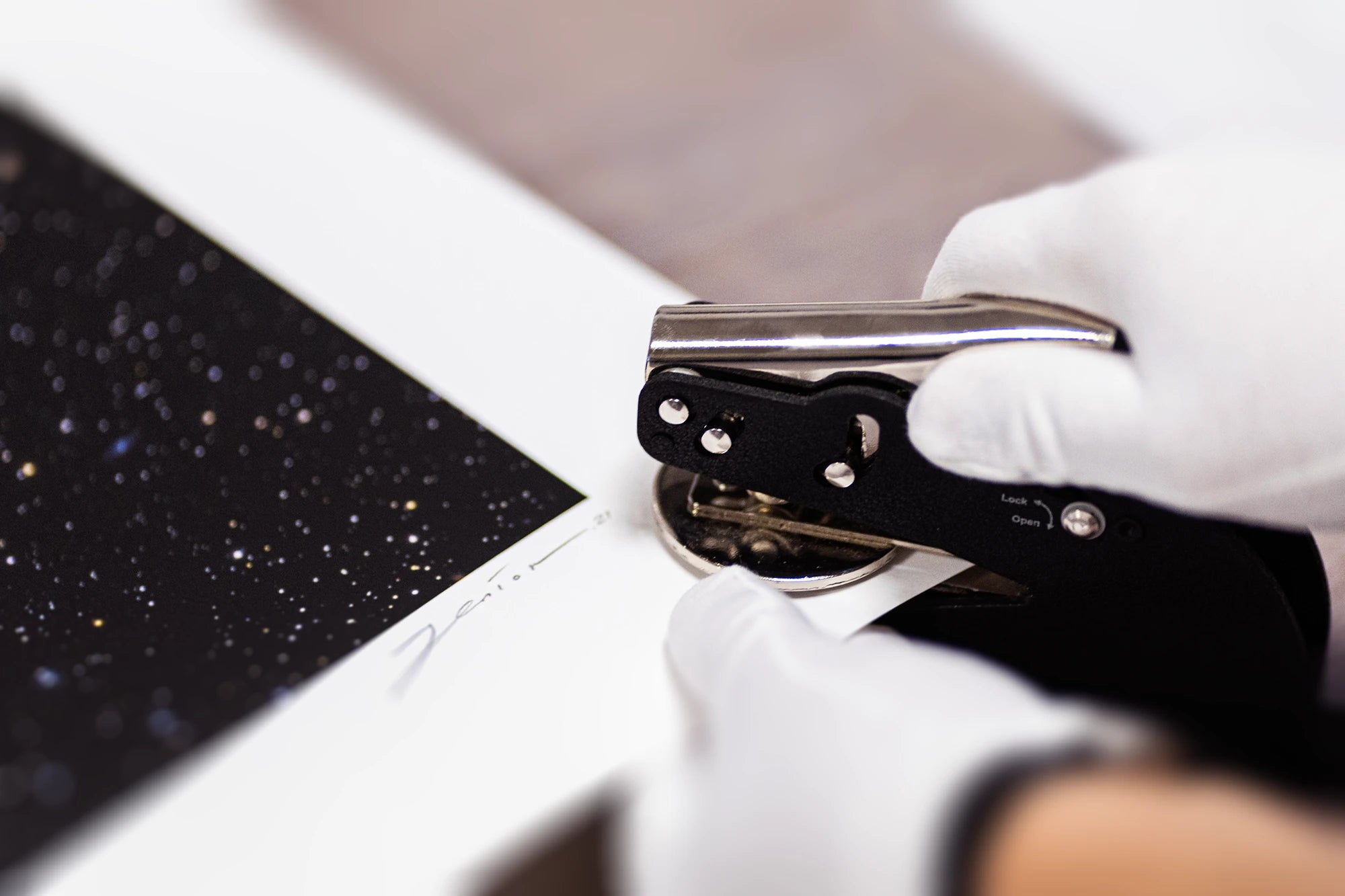
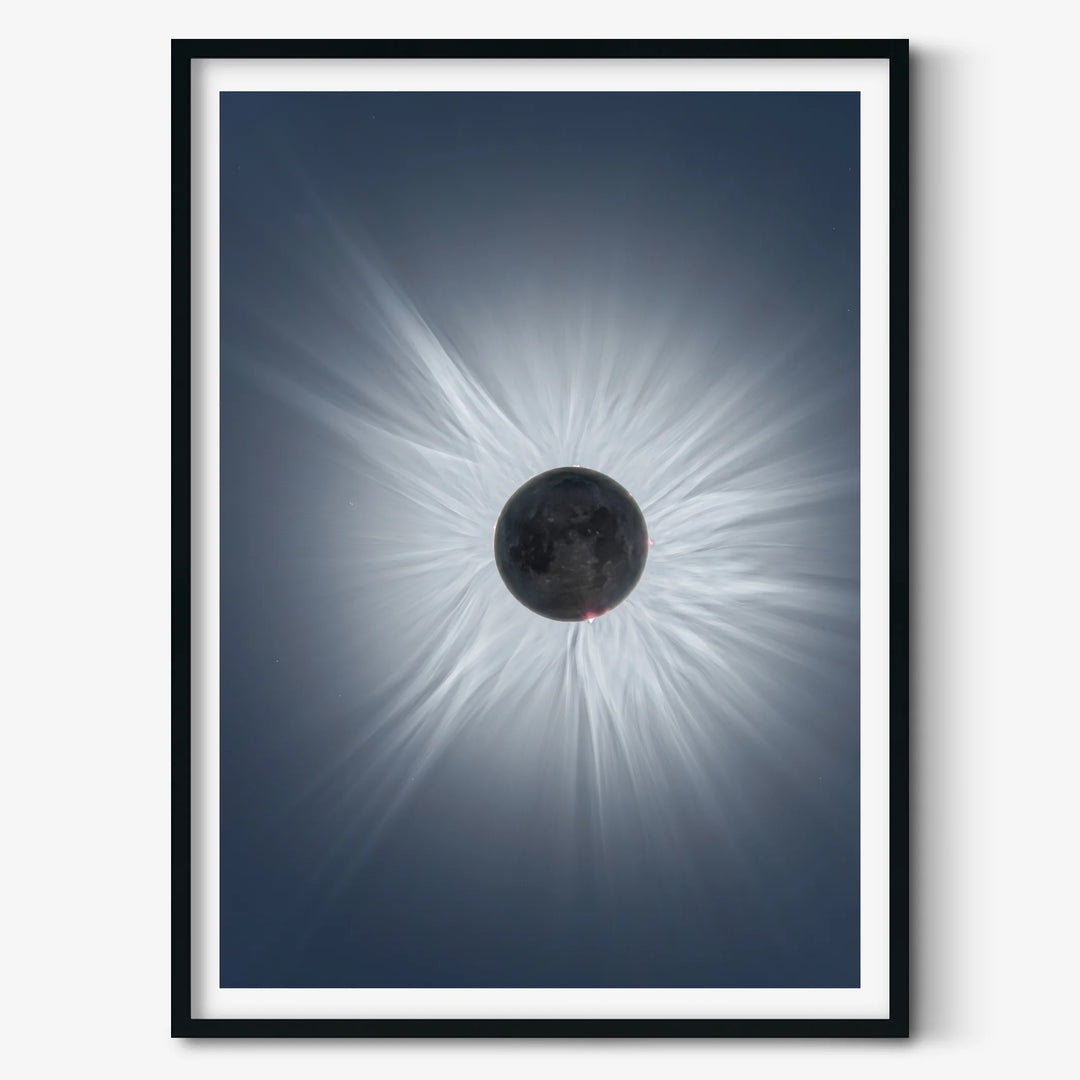
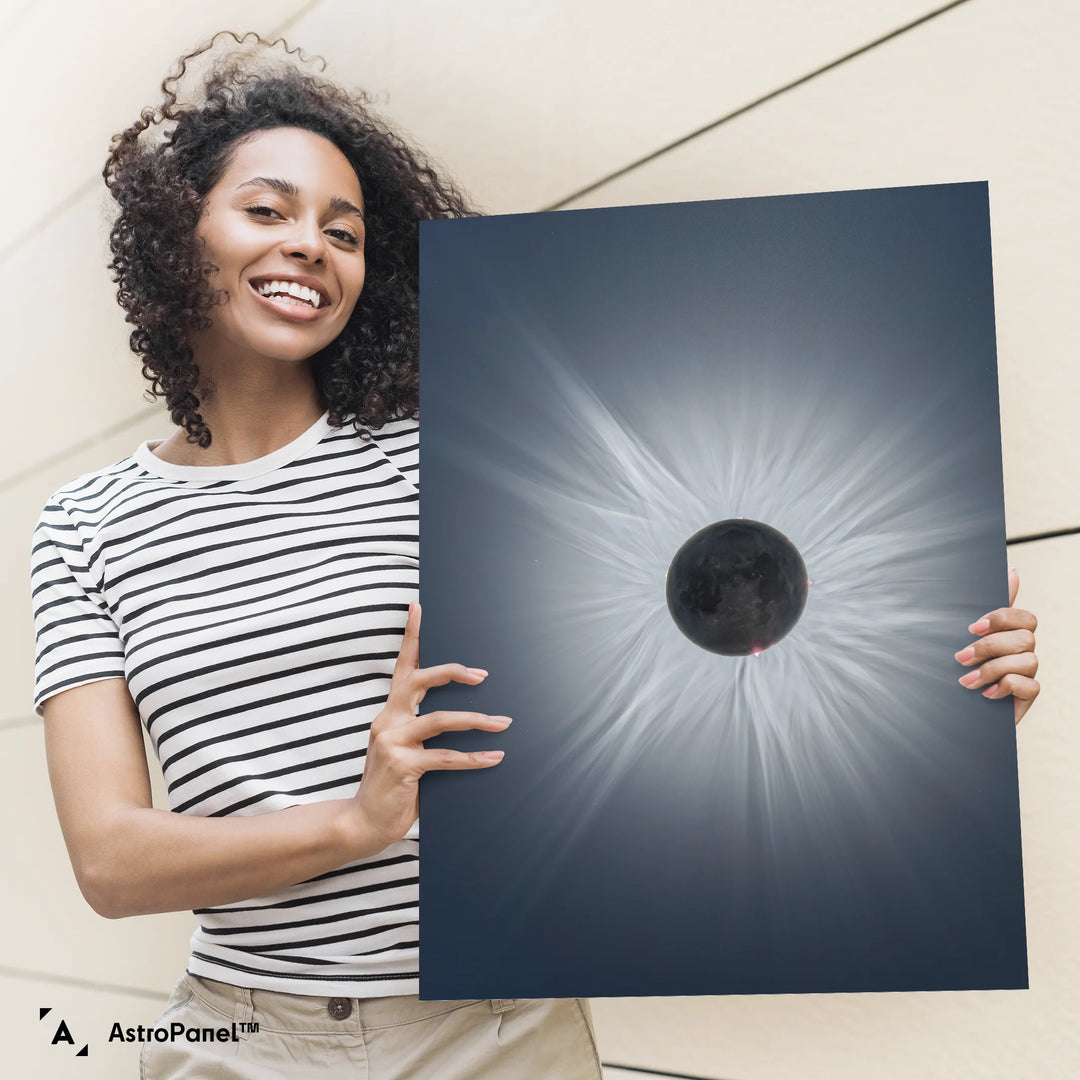
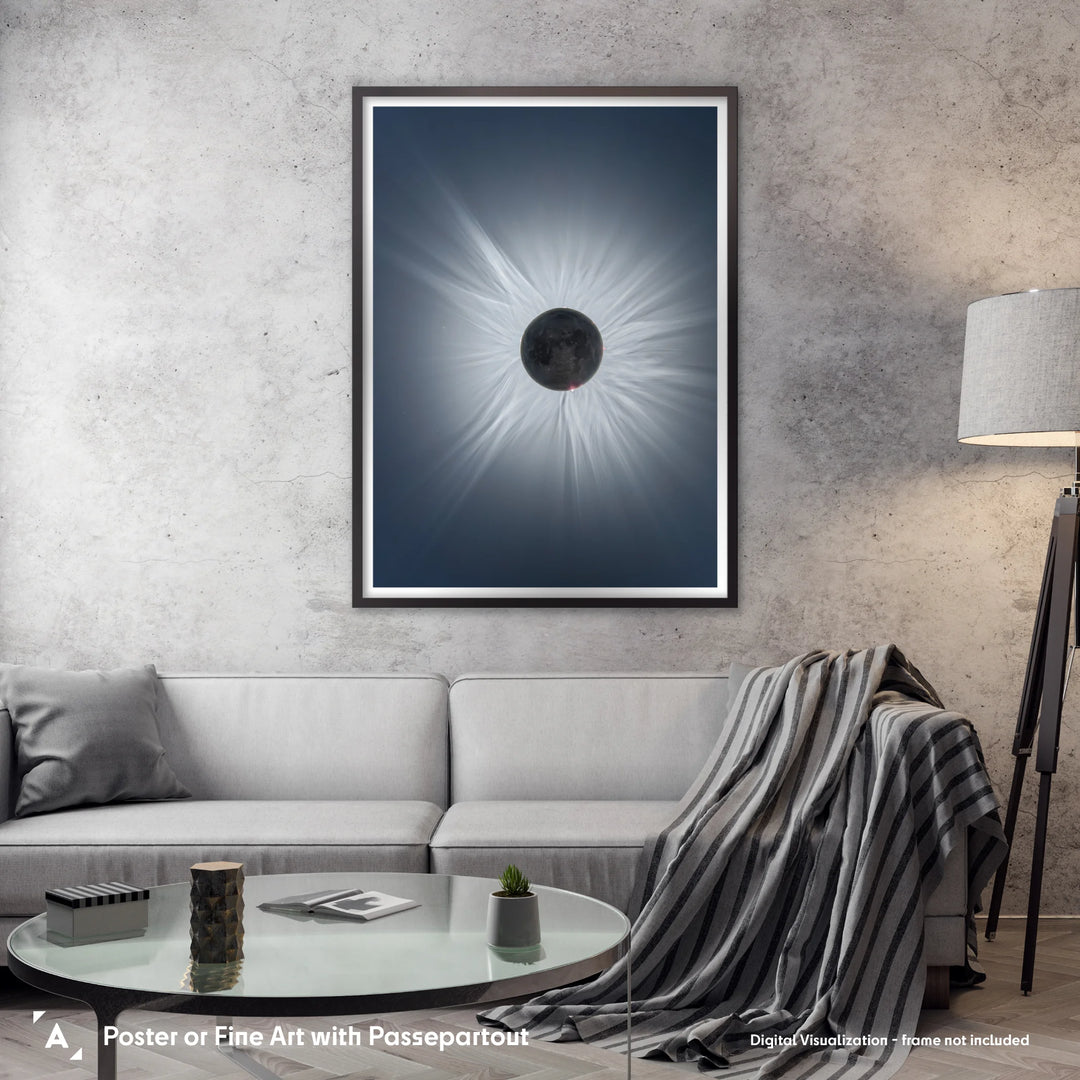
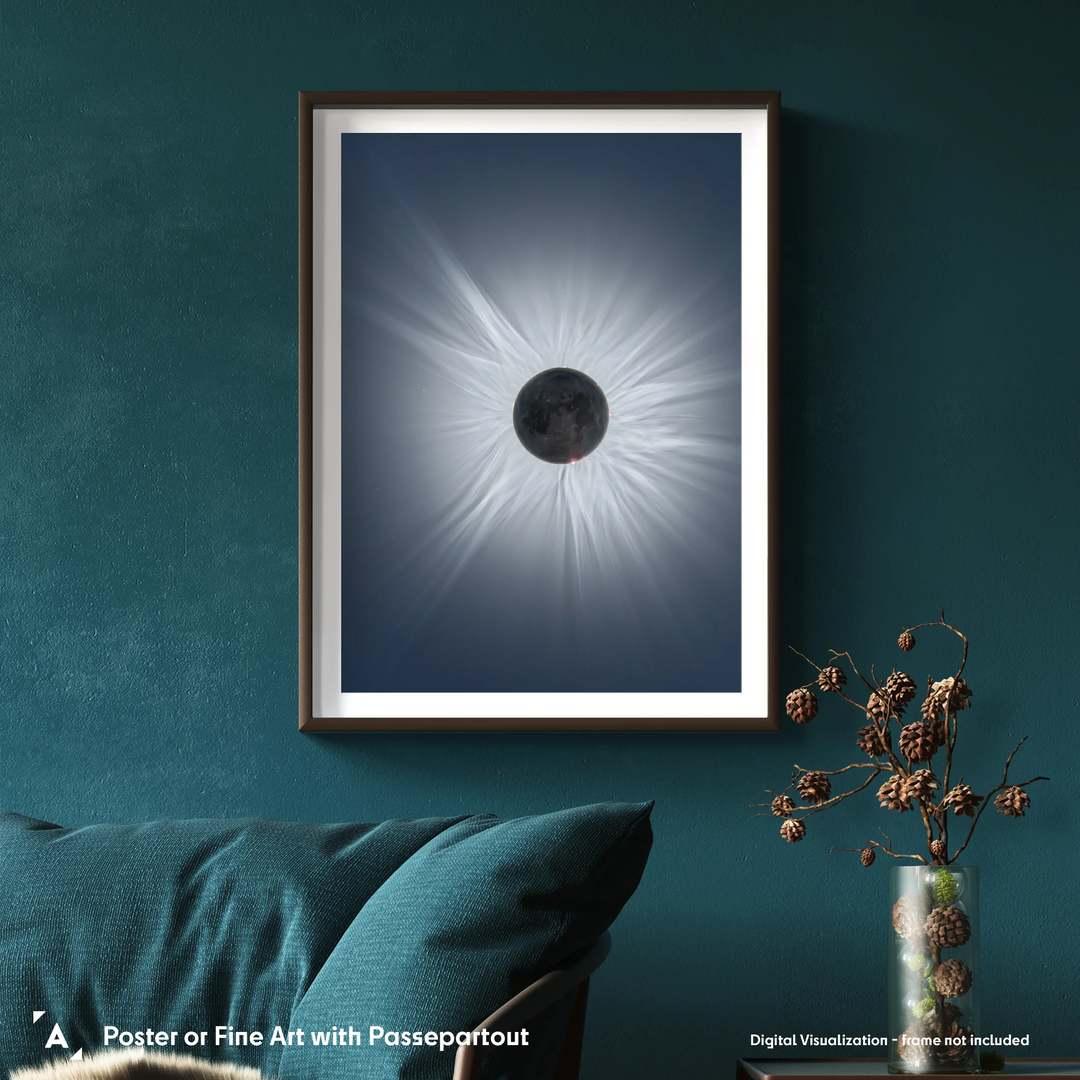
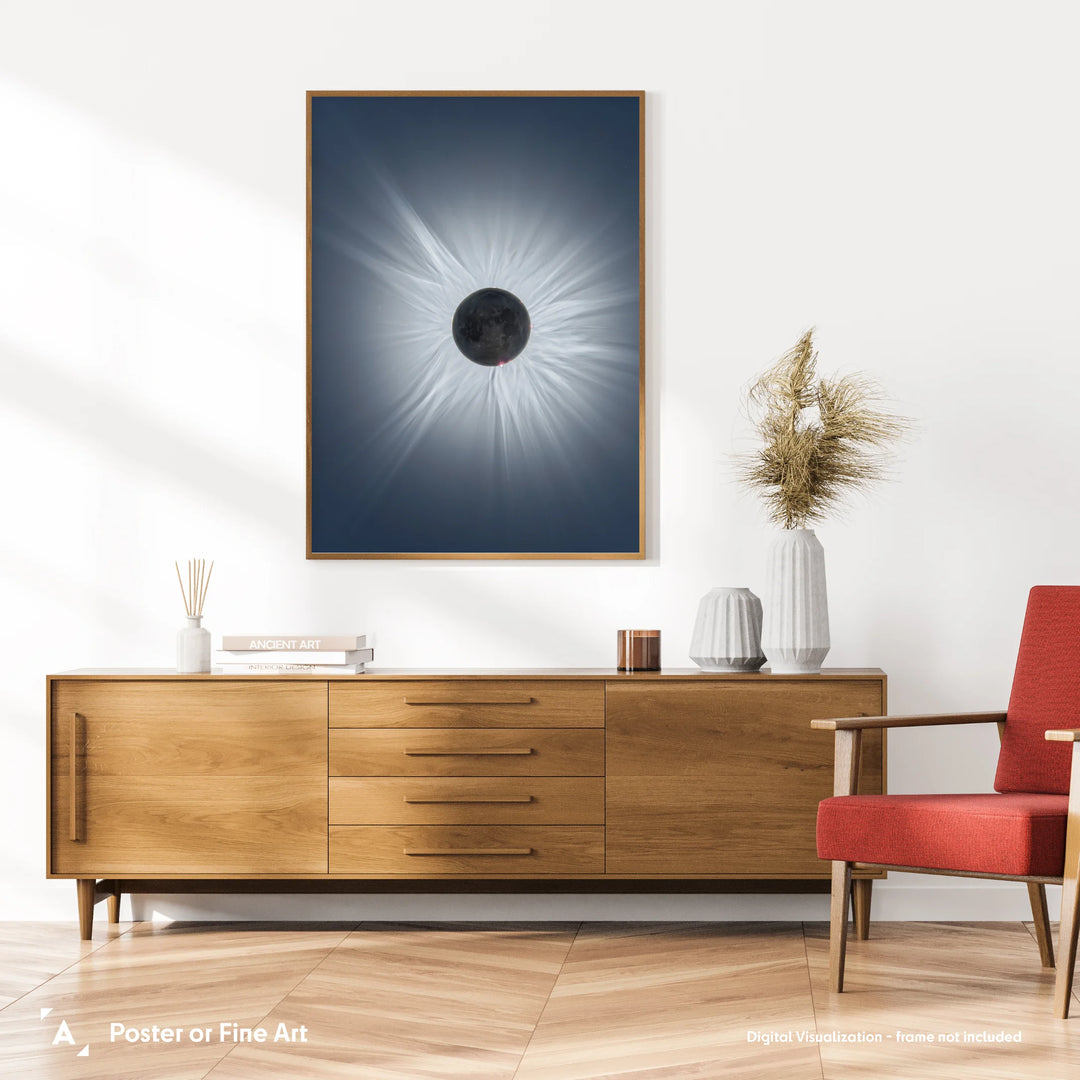
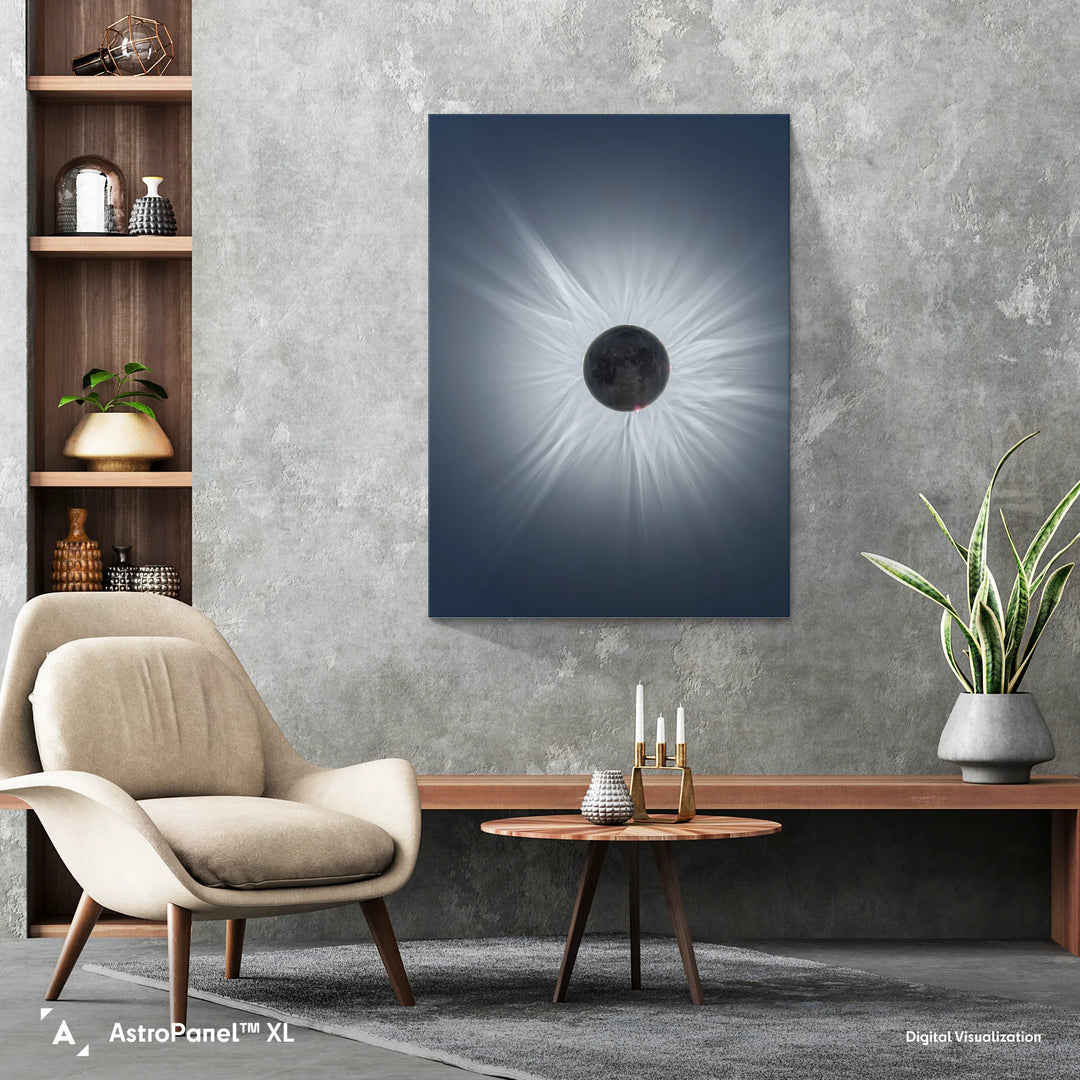
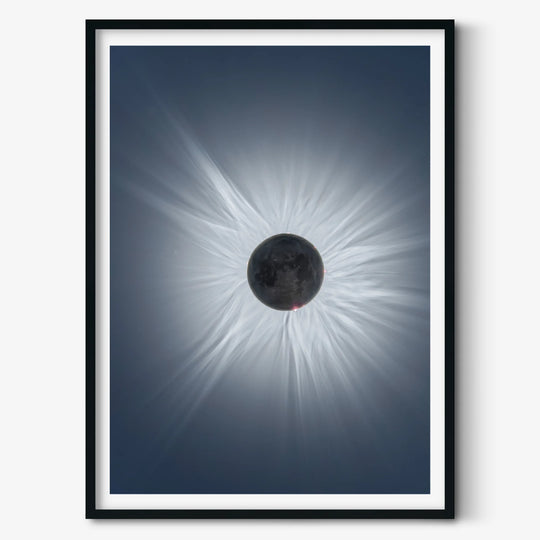
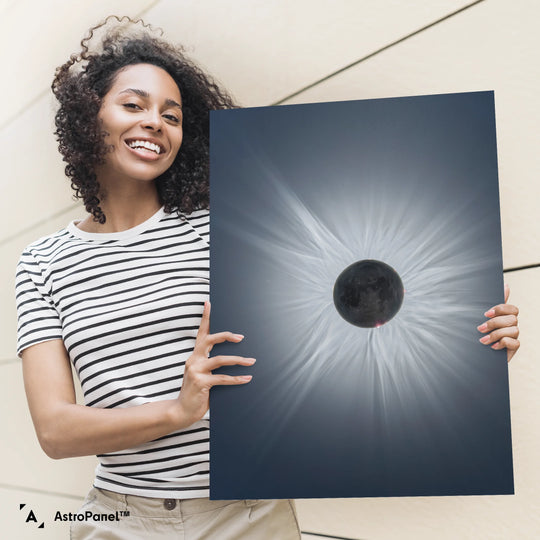
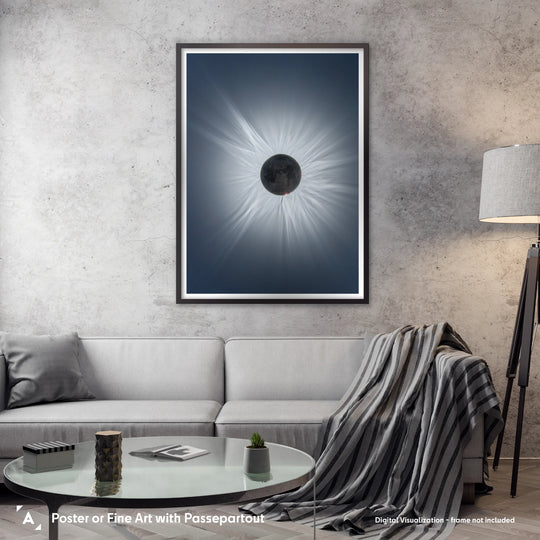
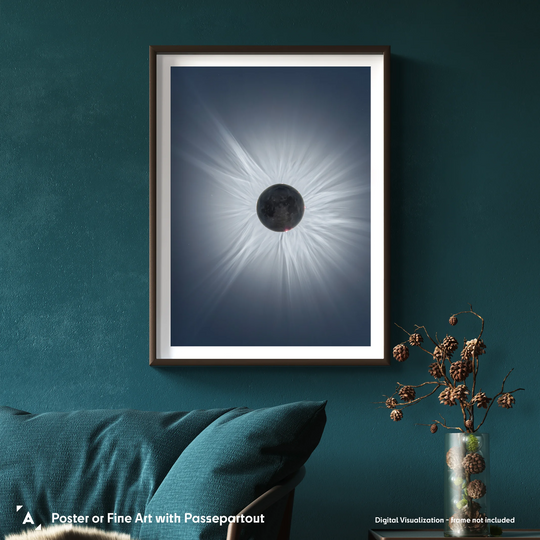
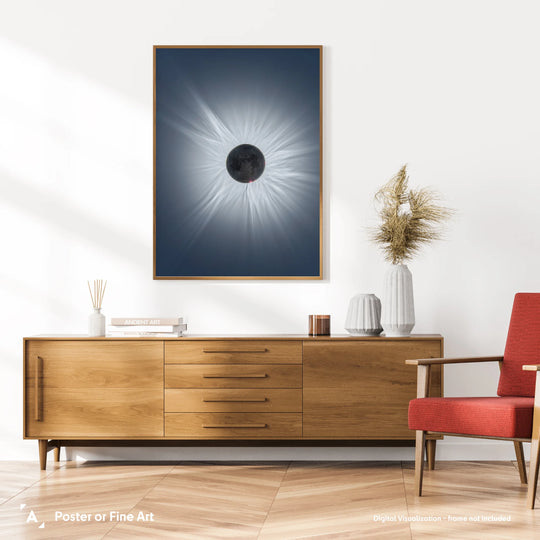
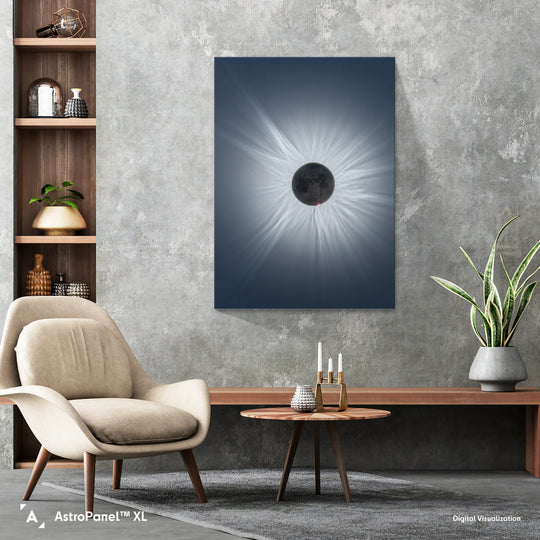

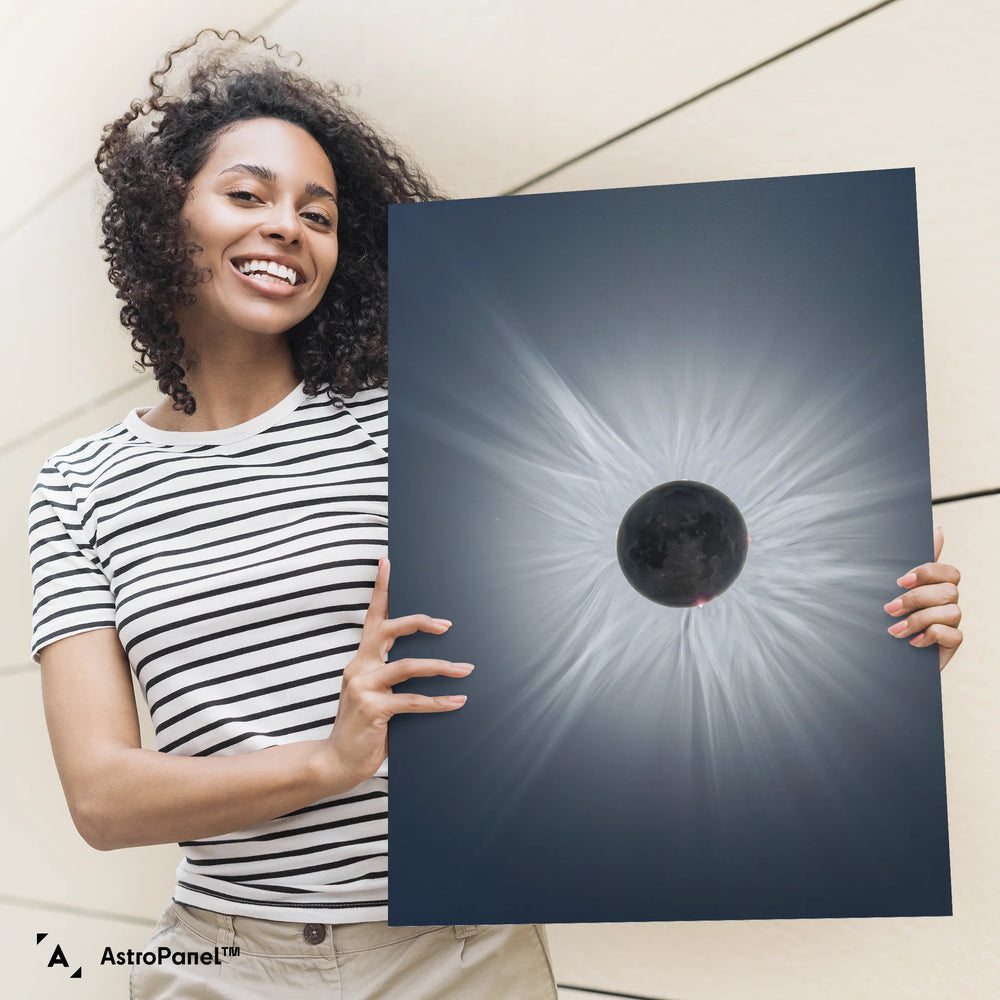
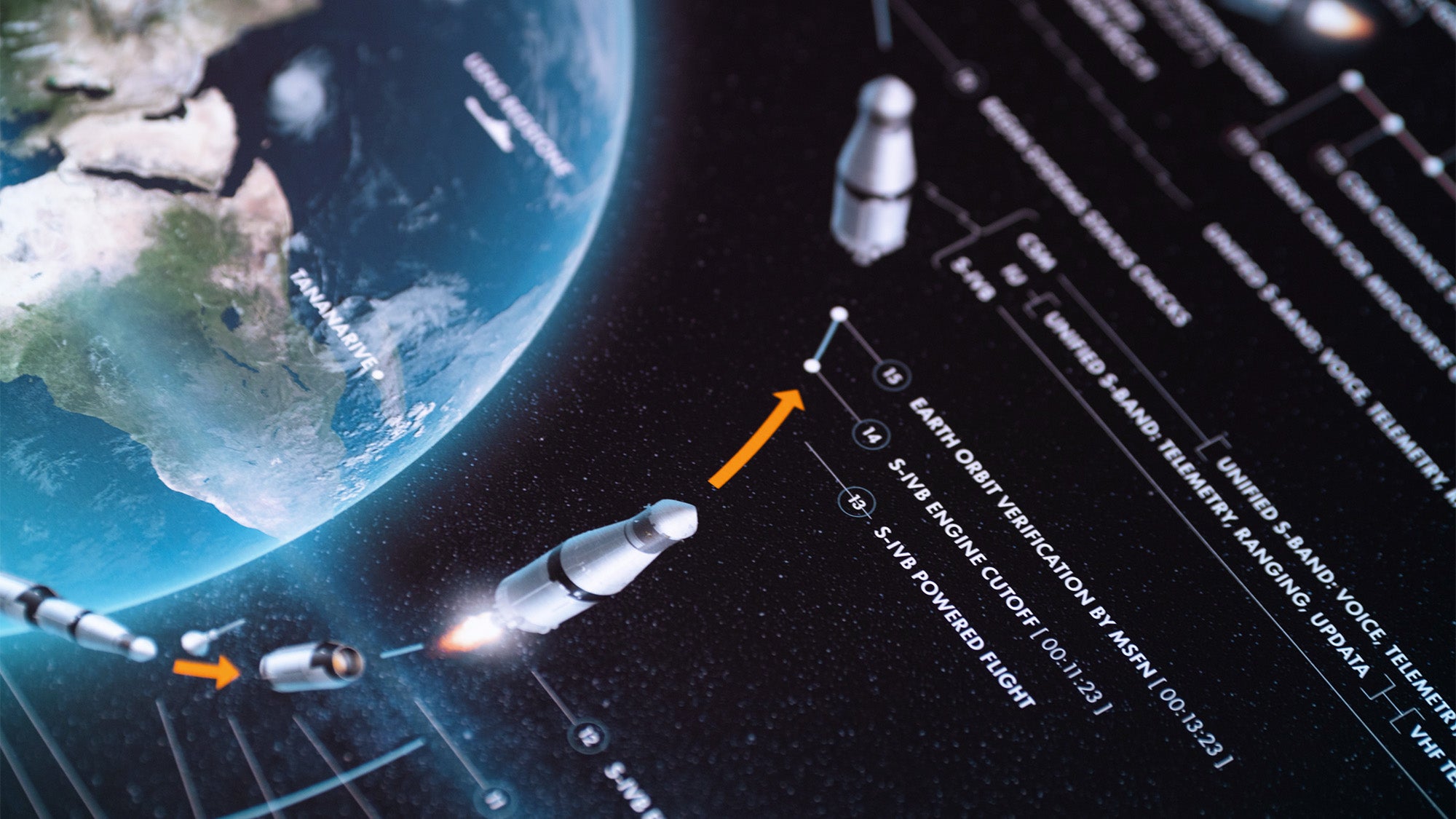
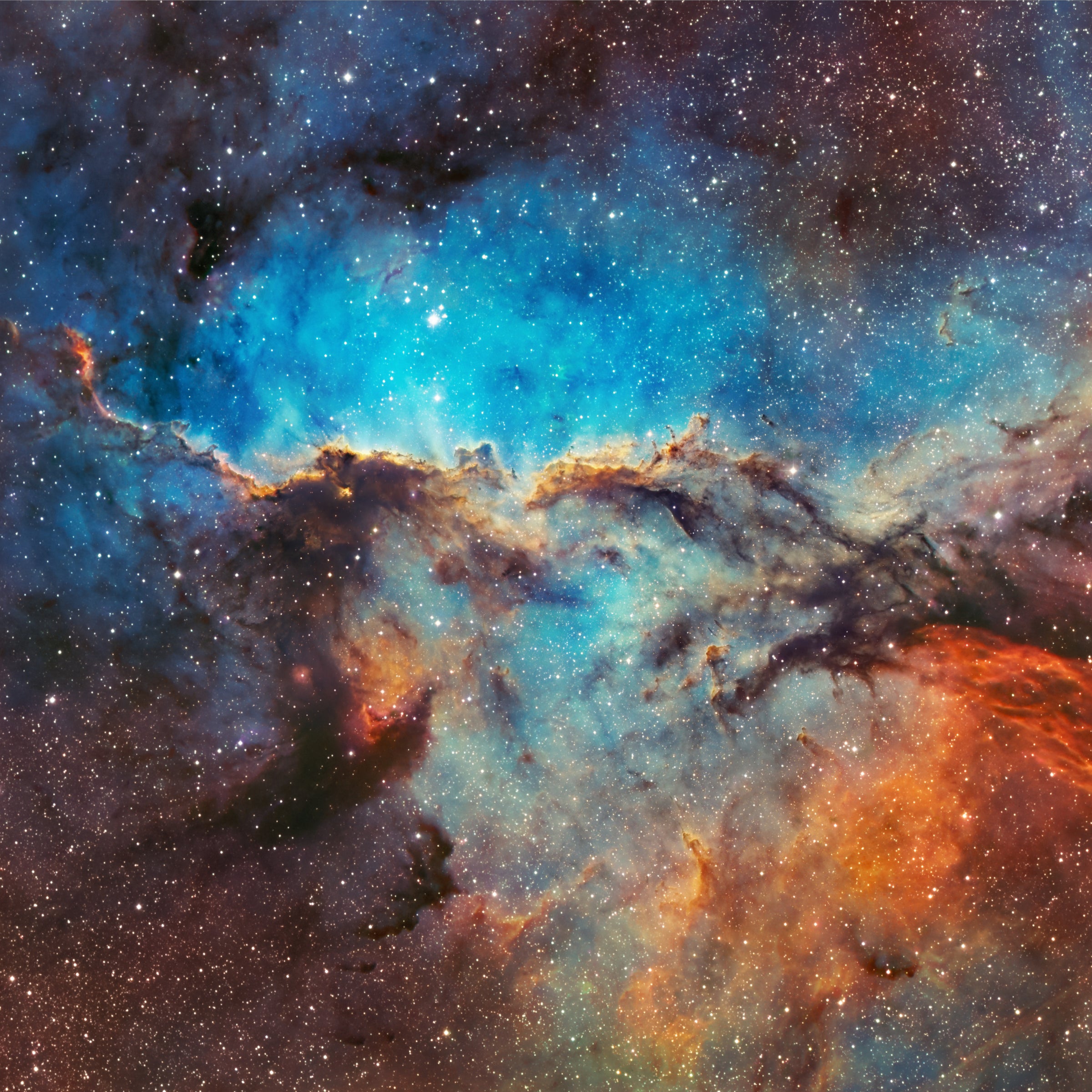
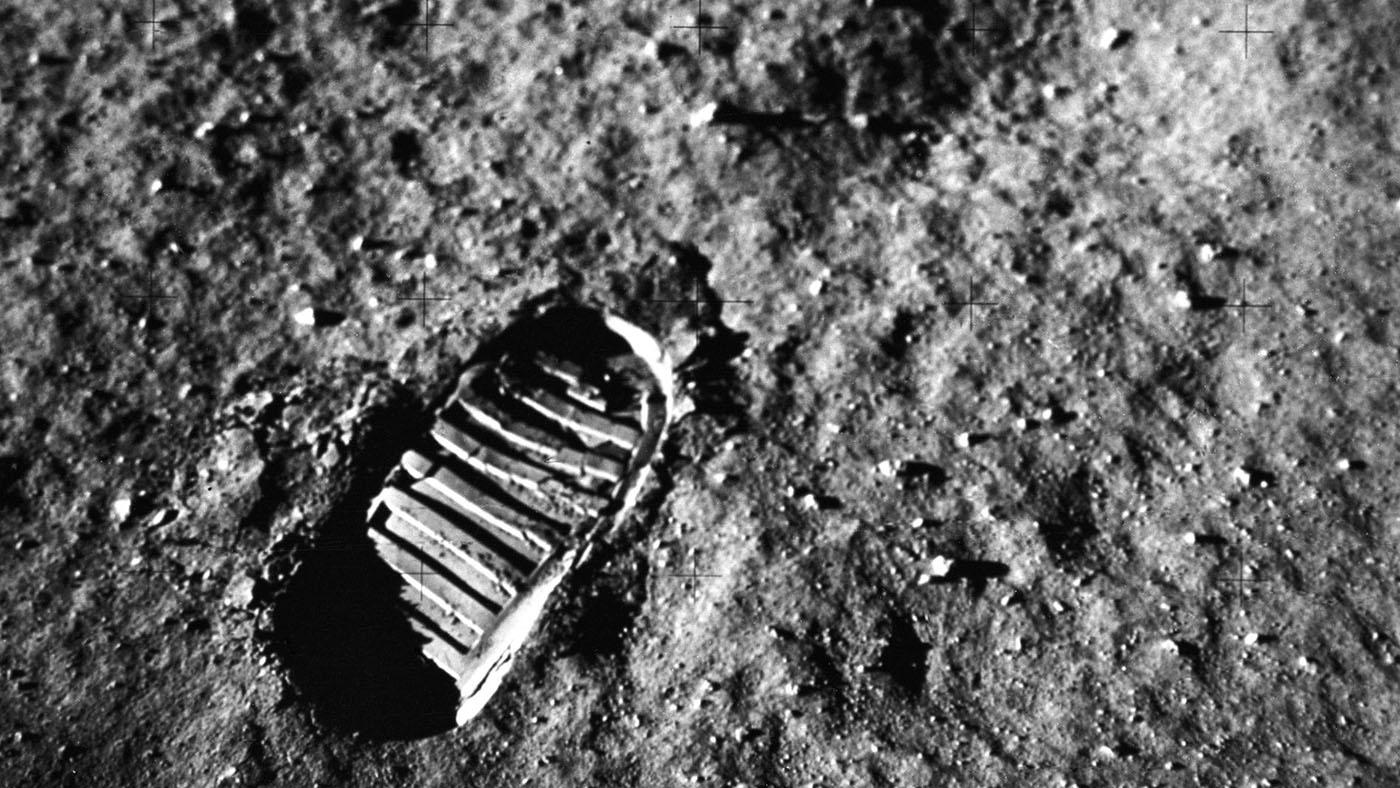
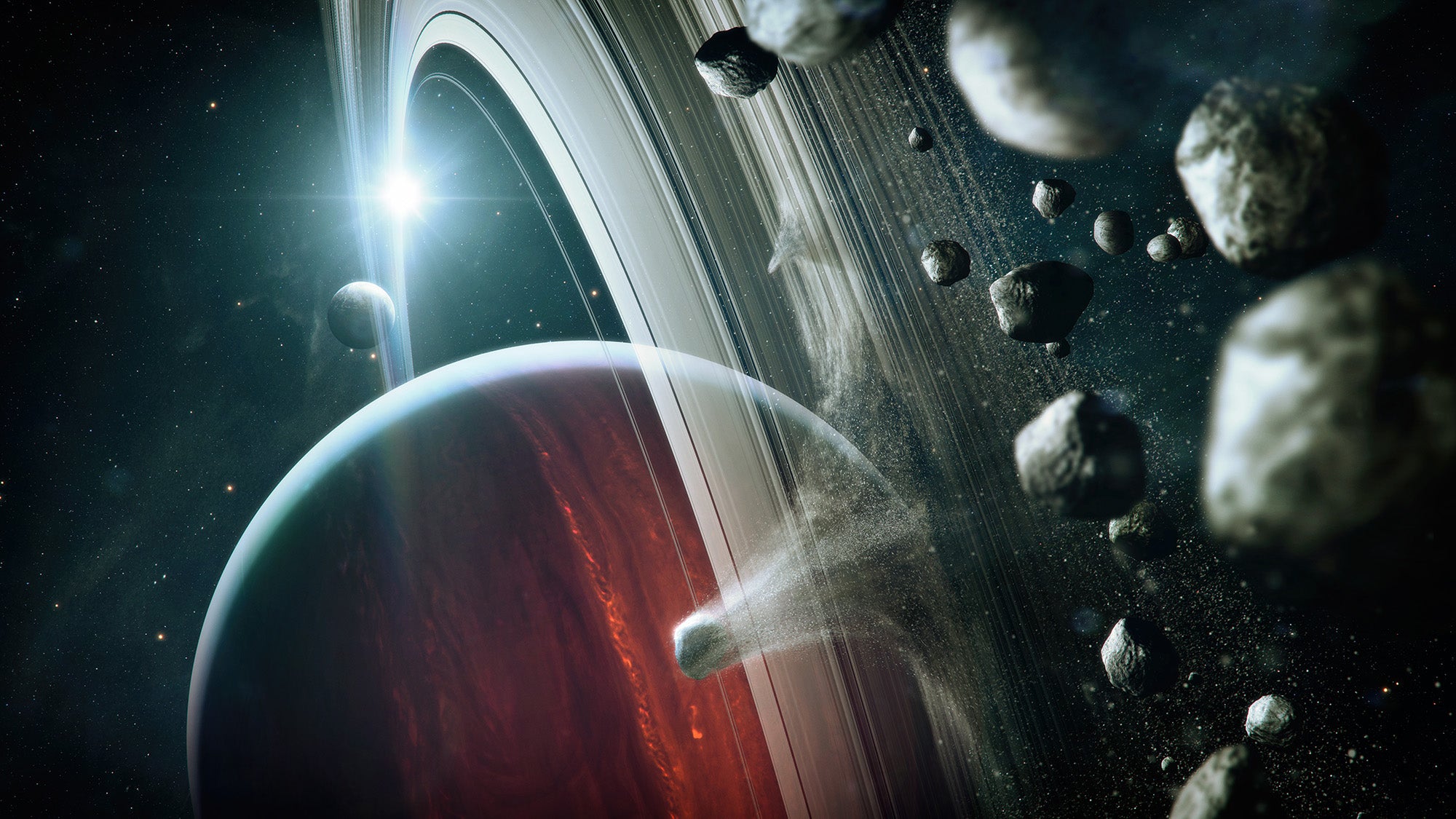
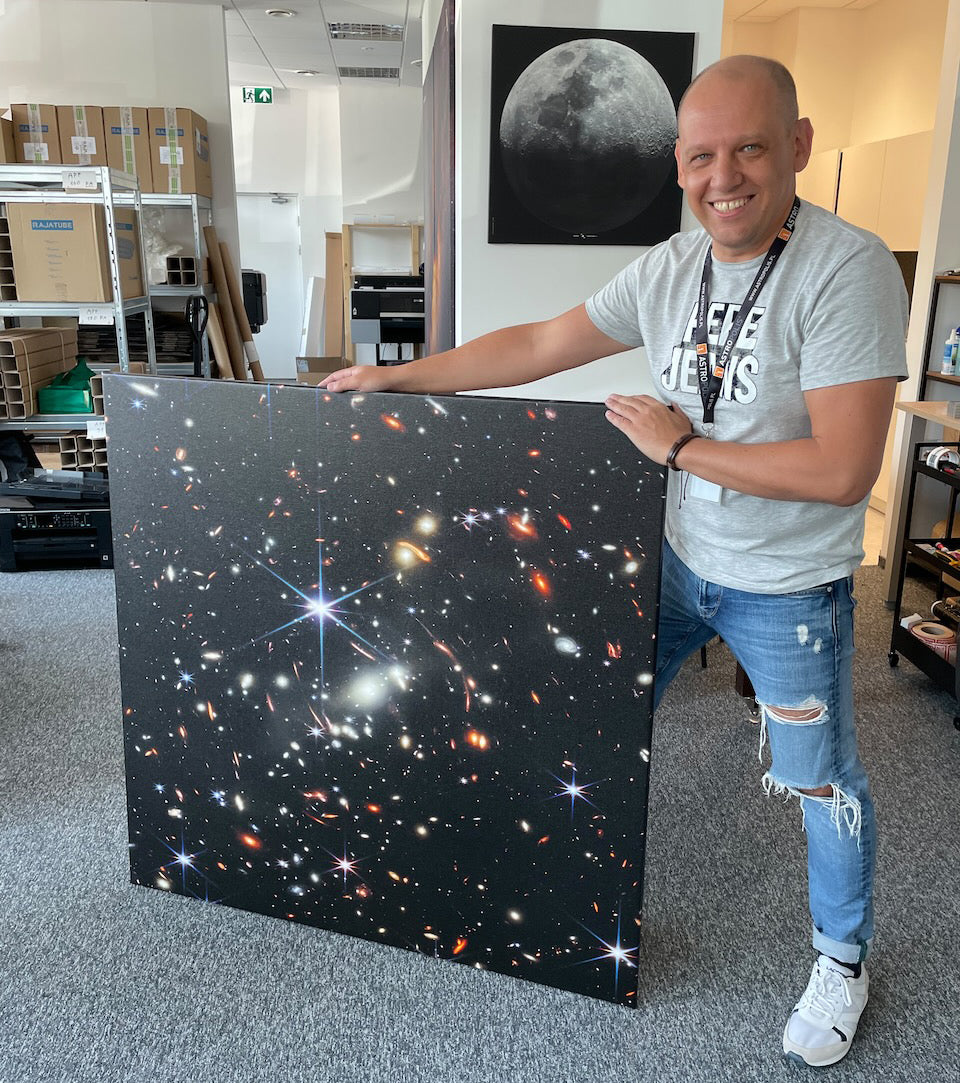
![4 Incredible Space Posters and Wall Art for Man’s Cave [Inspirations]](http://astrography.com/cdn/shop/articles/mans-cave-2-16x9-1_83814d94-574a-4782-a3a0-cf4e59620b81.webp?v=1763116144&width=1080)
